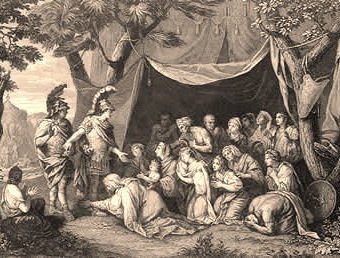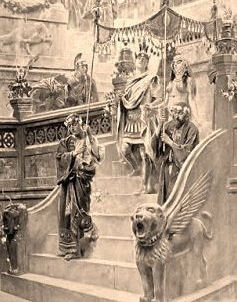

In
November 333 BC the 24-year-old Alexander had already conquered much of what
is now Turkey. With an army of 30,000 men, at the
battle of Issus (see map of Alexander’s campaigns), he defeated a Persian force twice that size.
The Persian king Darius
III had fled and his family were captured, as was Barsine, a friend
of the Persian queen. Although she was a widow, eight years his senior,
with a daughter of ten, Alexander seems to have fallen immediately in
love with Barsine and for the next few years she remained his concubine.

In 327 BC
Barsine bore Alexander a child. However, no sooner was the boy Heracles
born than Alexander met the much younger Roxanne, a beautiful
16-year-old princess from northern Afghanistan. The king paid Roxanne the honor he had
always denied Barsine by marrying her and making her his queen. Barsine
and her child left the court to return home and did not see Alexander again
until a few weeks before he died. His campaign over, he had
summoned her to Babylon so that he could see his four-year-old son
for the first time in years. As his only son, Heracles was still the
closest thing he had to an heir. However, Alexander now had two
official wives and either of them could bear the king a more legitimate
successor at any time. As it might prove to be years before Barsine
would be so close to Alexander again, had she seized the opportunity to take
both revenge on her former lover and secure the throne for her child?
Right: Alexander captures the Persian royal family and meets
Barsine.
(Mary Evans Picture Library)
(Mary Evans Picture Library)
Right: The marriage of Alexander and Roxanne. Was
this the motive for Alexander’s murder? (Mary Evans Picture Library)









